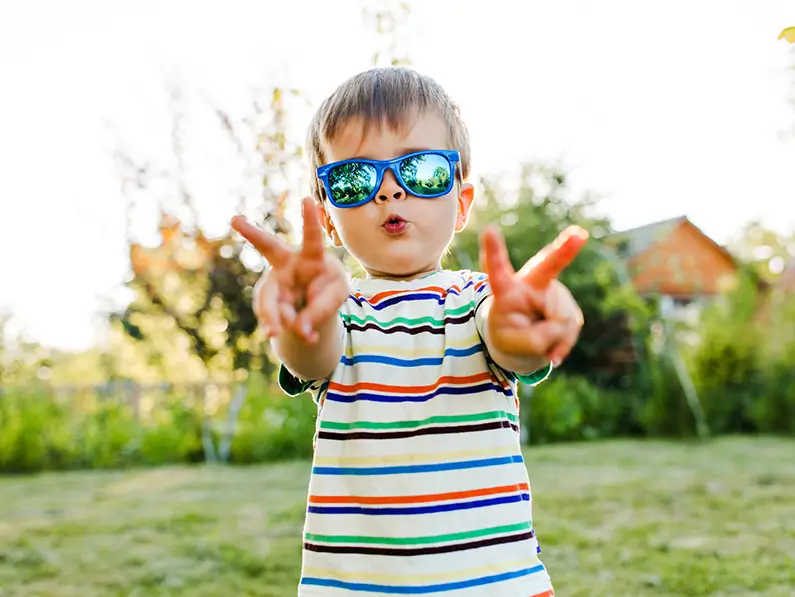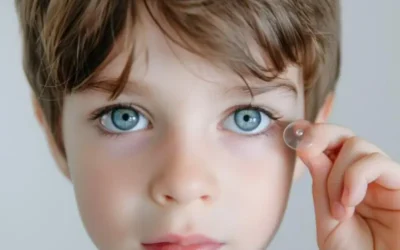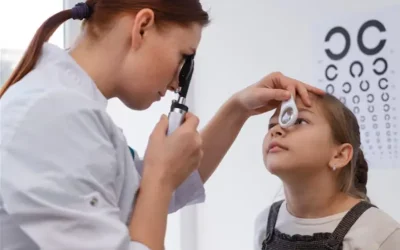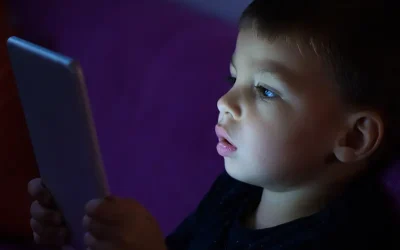Absolutely, baby sunglasses are not just a fashion accessory—they’re a crucial tool in protecting your infant’s sensitive eyes from harmful ultraviolet (UV) rays. Early exposure to UV radiation can lead to both immediate discomfort and long-term vision problems. Ensuring your baby wears appropriate sunglasses is a proactive step towards safeguarding their ocular health.
Why Babies’ Eyes Are More Vulnerable to UV Rays
Underdeveloped Eye Structures
Infants’ eyes are still developing, and their lenses are more transparent compared to adults. This transparency allows more UV rays to reach the retina, increasing the risk of damage.
Increased UV Penetration in Infants
The natural protective mechanisms in adult eyes, such as the ability to filter UV light, are not fully developed in babies. As a result, their eyes are more susceptible to UV-induced harm.
Understanding UV Radiation
UVA vs. UVB Rays
Not all UV rays are created equal.
- UVA penetrates deep into the eye’s lens and retina.
- UVB affects the surface of the eye, leading to sunburn‑like damage.
Imagining UV radiation as water: UVA is the gentle, deep‑soaking rain, while UVB is the scorching sunbeam on a hot day.
The UV Index Explained
Ever check the weather app’s UV index? That number (0–11+) estimates how strong UV radiation will be. A value above 6 means you need extra protection—even in the shade.
Why Babies Are Particularly Vulnerable
Anatomy of Infant Eyes
At birth, a baby’s lens and cornea are more transparent than an adult’s. This transparency allows more UV light straight to the retina, where it can do damage over time.
Developmental Sensitivity
Babies haven’t yet developed natural filters against UV. Their pupils may be larger relative to eye size, further increasing UV entry.
Health Risks of UV Exposure in Children
Photokeratitis: Symptoms & Treatment
Photokeratitis, essentially “sunburn of the eye,” causes:
- Redness & watering
- Blurry vision
- Sensitivity to light
Fortunately, symptoms usually resolve in 24–48 hours with rest and cool compresses.
Early Cataract Formation
Repeated UV exposure can cloud the lens over years, leading to cataracts even in young adulthood.
Skin Cancer Risk Around the Eye
The delicate skin of eyelids and around the eyes is prone to UV‑induced precancerous changes. Early protection lowers lifelong risk.
The Role of Baby Sunglasses
How Sunglasses Block UV Rays
Quality baby sunglasses use special coatings to block 99–100% of UVA and UVB rays. Think of them as tiny shields that sit an inch away from the eye.
Glare Reduction & Comfort
Beyond UV, sunglasses cut down glare—so your child isn’t squinting in bright light, which can lead to headaches and eye strain.
Selecting the Perfect Pair
Certification & UV Protection Labels
Always look for:
- UV400 or “100% UVA/UVB protection” on the label.
- Standards like CE (EU), ASTM F803 (US), or AS/NZS 1067 (Australia/New Zealand).
Frame Styles & Materials
- Polycarbonate Frames: Lightweight, highly impact‑resistant.
- Flexible Hinges & Straps: Adapt to tiny faces; prevent pinching.
Lens Types & Tints
Polarized vs. Non‑Polarized
Polarized lenses reduce horizontal glare (great for water play), but non‑polarized still block UV.
Mirror Coatings
Reflective coatings can boost UV protection and add a fun, shiny finish.
Proper Fit and Wear
Measuring for a Secure Fit
- Width: Should match face width without pressing temples.
- Nosebridge: Soft pads to prevent slipping.
- Straps: Adjustable elastic ensures the glasses stay put.
Common Fit Issues & Solutions
- Slipping Down: Add silicone nose grips or tighten the strap.
- Pinching: Choose a wider, softer frame or add foam padding.
Supplementary Sun‑Safety Measures
Hats & UV‑Protective Clothing
Wide‑brimmed hats (at least 3 inches all around) and lightweight UV‑protective shirts complement sunglasses.
Sunshades, Umbrellas & Timing
- Use strollers with UV‑blocking canopies.
- Plan outings before 10 a.m. or after 4 p.m. when UV is less intense.
Debunking Myths About Baby Sunglasses
- “Dark lenses are enough.” Wrong—without UV filter, dark lenses dilate the pupil, letting in more harmful light.
- “They won’t keep them on.” With training and fun designs, most babies adapt quickly.
Integrating Sunglasses Into Daily Routine
Making Sunglasses Fun
Pick frames with favorite animals, bright colors, or attachable charms. The more playful, the more your baby will want to wear them.
Training & Gradual Introduction
Start indoors—let them handle and “wear” the sunglasses for a few minutes. Pair it with praise and a game like “peek‑a‑boo.”
Expert Recommendations & Guidelines
Pediatrician & Ophthalmologist Advice
Most eye specialists recommend sunglasses for infants 6 months and older when outdoors. Consult your pediatrician if you notice unusual eye rubbing or redness.
Standards from WHO & AAO
The World Health Organization and American Academy of Ophthalmology both emphasize UV protection from infancy to reduce lifetime risk of ocular diseases.
Caring for Baby Sunglasses
Cleaning & Maintenance
- Use a microfiber cloth or lens cleaner designed for UV lenses.
- Avoid household cleaners—they can strip protective coatings.
Storage Tips
Keep them in a hard-shell case when not in use to prevent scratches and frame warping.
Conclusion
Baby sunglasses are far more than fashionable accessories—they’re a frontline defense against UV damage that can start in infancy and affect vision for life. By choosing certified, well‑fitting, and fun frames, integrating them into your child’s routine, and combining sunglasses with hats and smart outing times, you’re building healthy habits that protect tiny eyes today and for decades to come.
FAQ: Your questions answered
At what age can babies safely wear sunglasses?
Most experts advise starting around 6 months, when infants begin spending more time outdoors.
How do I know if the sunglasses block UV?
Check for “UV400” or “100% UVA/UVB protection” on the label. Certified frames will list standards like CE or ASTM F803.
Are polarized lenses better for kids?
Polarized lenses reduce glare—great near water or snow—but non‑polarized lenses still provide full UV protection.
Can I use adult sunglasses on my baby?
Adult frames are often too large and heavy. Baby‑specific frames ensure a proper fit and comfort.
How do I encourage my toddler to keep them on?
Make it a game: peek‑a‑boo, choose fun colors, let them “help” pick out frames, and model wearing glasses yourself.




